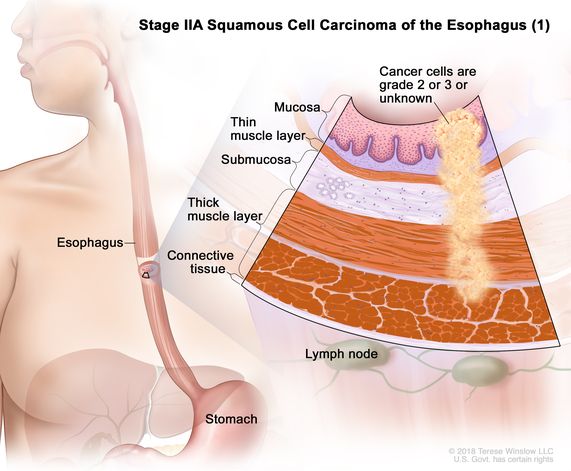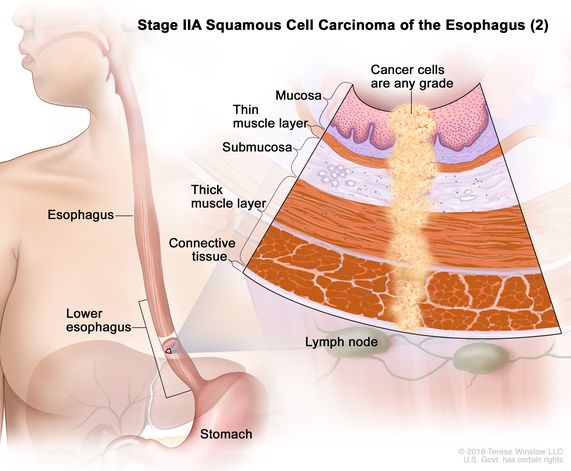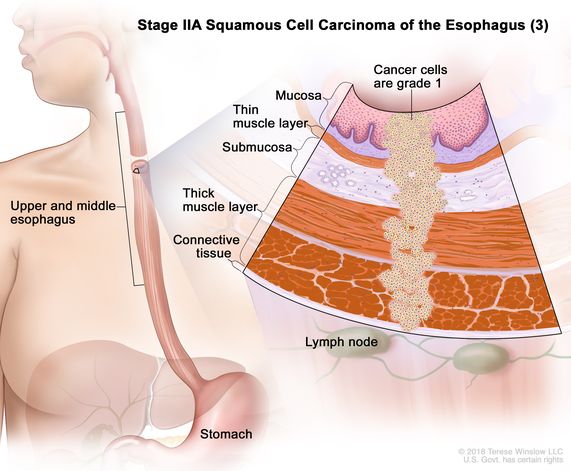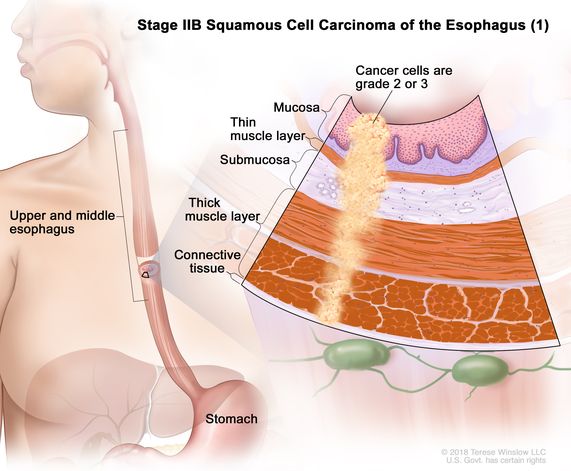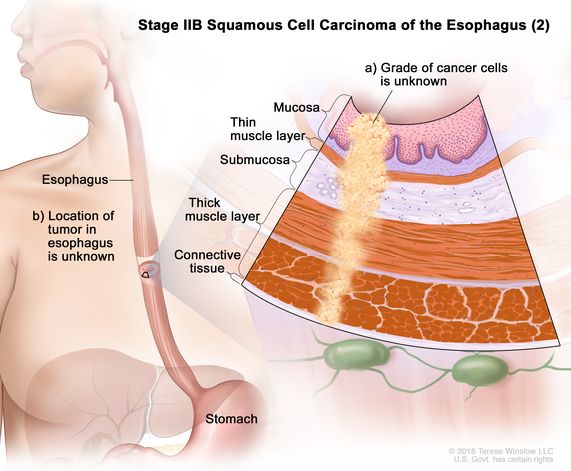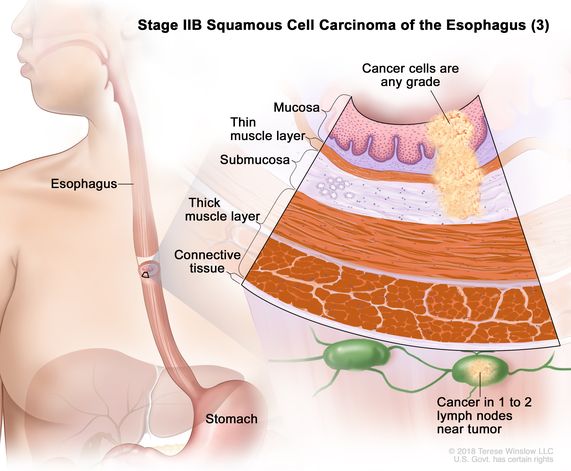stage II esophageal squamous cell carcinoma
(... ee-SAH-fuh-JEE-ul SKWAY-mus sel KAR-sih-NOH-muh)
Stage II is divided into stages IIA and IIB, depending on where the cancer has spread. In stage IIA, cancer has spread (1) into the thick muscle layer of the esophagus wall. The cancer cells are grade 2 or 3 or the grade is not known. Grade 2 and 3 cancer cells look more abnormal under a microscope and grow and spread more quickly than grade 1 cancer cells; or (2) into the connective tissue layer of the esophagus wall. The tumor is in the lower esophagus; or (3) into the connective tissue layer of the esophagus wall. The cancer cells are grade 1. Grade 1 cancer cells look more like normal cells under a microscope and grow and spread more slowly than grade 2 and 3 cancer cells. The tumor is in either the upper or middle esophagus. In stage IIB, cancer has spread (1) into the connective tissue layer of the esophagus wall. The cancer cells are grade 2 or 3. The tumor is in either the upper or middle esophagus; or (2) into the connective tissue layer of the esophagus wall. The grade of the cancer cells is not known, or it is not known where the tumor has formed in the esophagus; or (3) into the mucosa layer, thin muscle layer, or submucosa layer of the esophagus wall. Cancer is found in 1 or 2 lymph nodes near the tumor.
